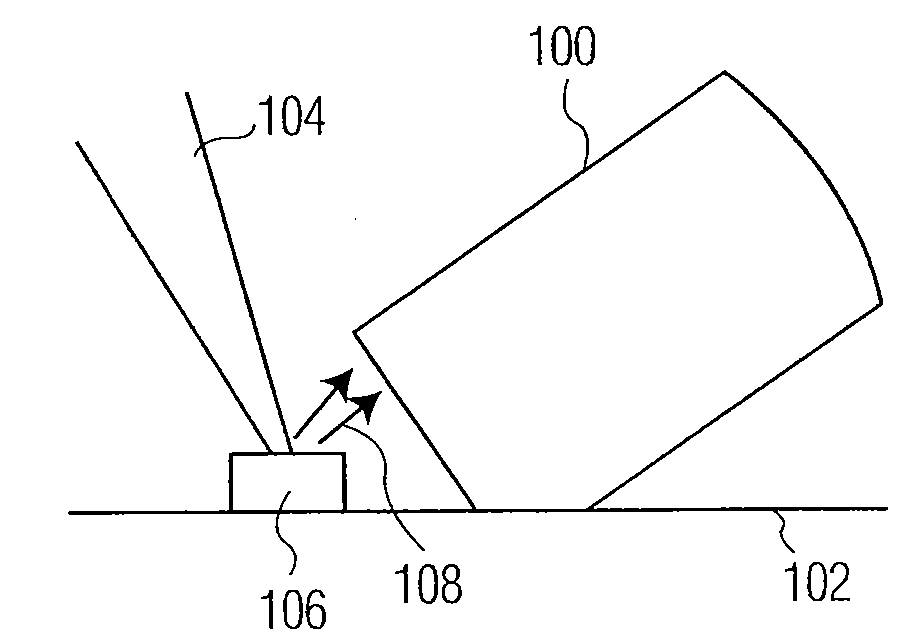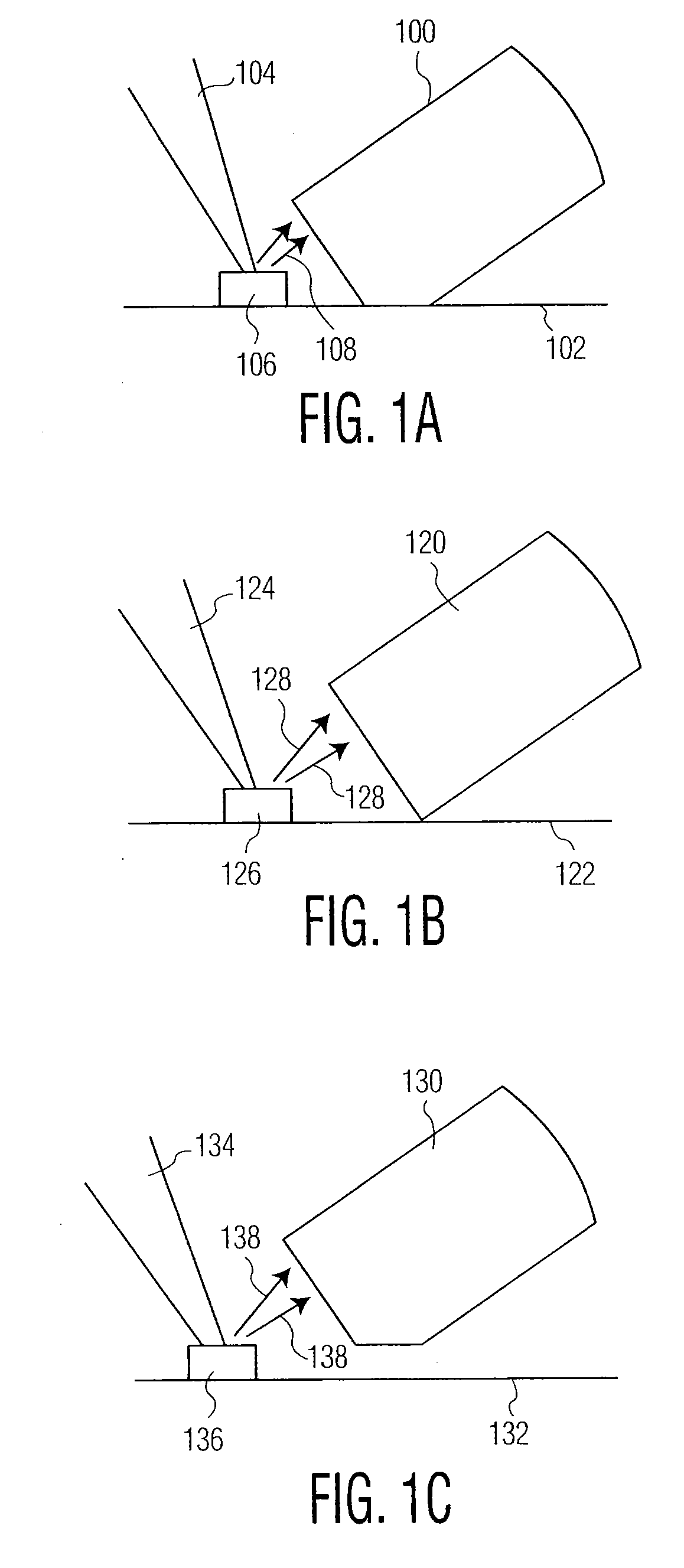Energy collection and power reduction in laser coupling process
a laser coupling and laser technology, applied in the field of apparatus, can solve the problems of high-precision attachments that have too much thermal expansion for epoxy attachments, and may not be reliable, and achieve the effect of reducing the amount of power used
- Summary
- Abstract
- Description
- Claims
- Application Information
AI Technical Summary
Benefits of technology
Problems solved by technology
Method used
Image
Examples
Embodiment Construction
[0020]FIG. 1A shows an exemplary embodiment of the invention. As shown, laser beam 104 irradiates device attaching element 106 which is located on surface 102. Laser energy 108 is reflected from device attaching element 106 in different directions. Energy collector tip 100 is proximate to device attaching element 106 so that at least a portion of the laser energy 108 is collected by energy collector tip 100. Energy collector tip 100 is also in contact with surface 102. The precise location of energy collector tip 100 and the area of collector tip 100 that is in contact with surface 102 shown in FIG. 1 is merely illustrative and is not limiting.
[0021]It is contemplated that the device attaching element may be made of a number of different materials used during a laser coupling process, which have the desired thermal and mechanical properties. It is noted that the desired thermal and mechanical properties may vary depending on the type of components which are being coupled. These mate...
PUM
| Property | Measurement | Unit |
|---|---|---|
| wavelengths | aaaaa | aaaaa |
| power | aaaaa | aaaaa |
| collecting energy | aaaaa | aaaaa |
Abstract
Description
Claims
Application Information
 Login to View More
Login to View More - R&D
- Intellectual Property
- Life Sciences
- Materials
- Tech Scout
- Unparalleled Data Quality
- Higher Quality Content
- 60% Fewer Hallucinations
Browse by: Latest US Patents, China's latest patents, Technical Efficacy Thesaurus, Application Domain, Technology Topic, Popular Technical Reports.
© 2025 PatSnap. All rights reserved.Legal|Privacy policy|Modern Slavery Act Transparency Statement|Sitemap|About US| Contact US: help@patsnap.com



